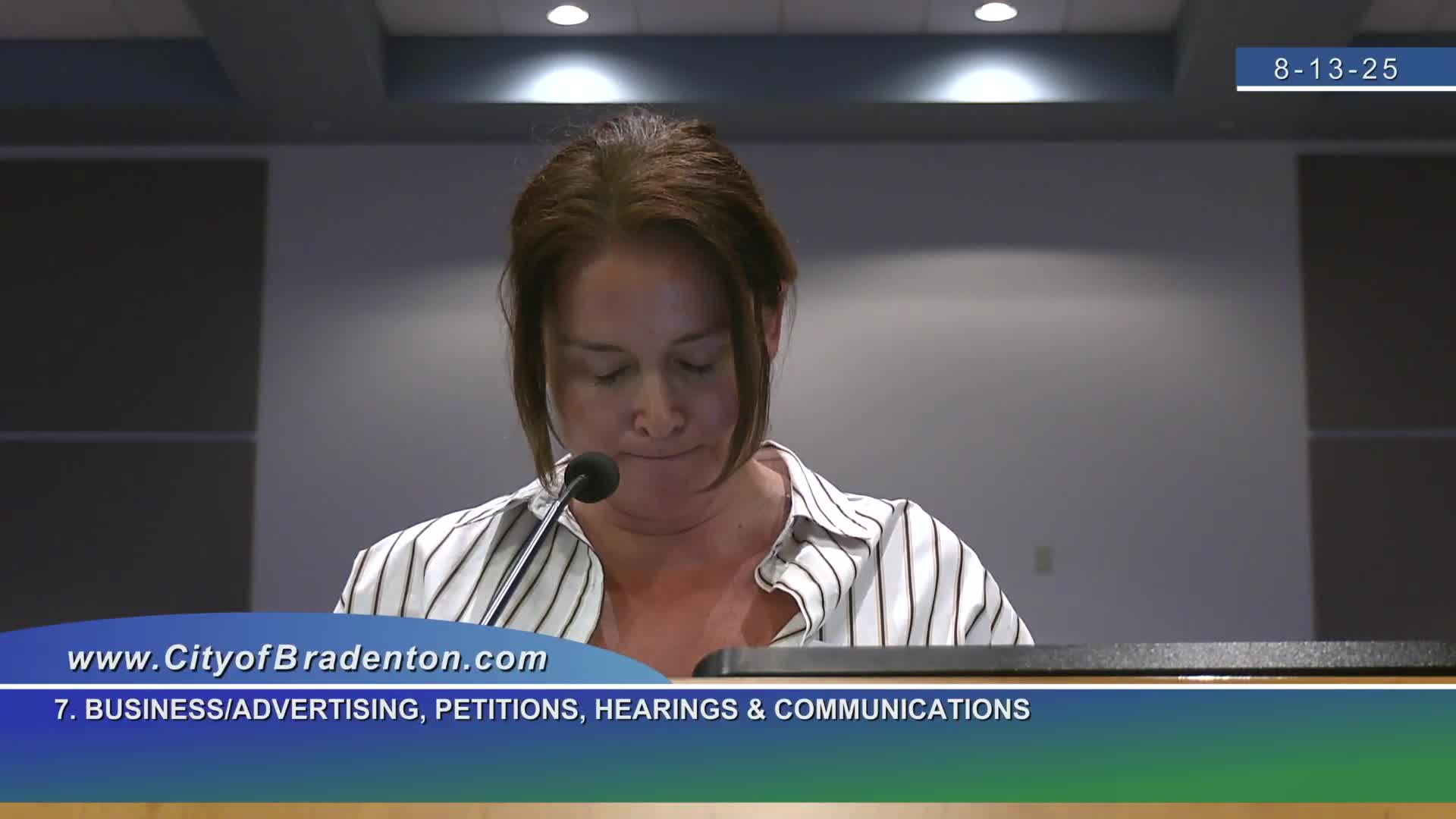Residents Oppose Bradenton's Ordinance 4035 Allowing Increased Density in Coastal Hazard Areas
August 18, 2025 | Bradenton City, Manatee County, Florida
This article was created by AI summarizing key points discussed. AI makes mistakes, so for full details and context, please refer to the video of the full meeting. Please report any errors so we can fix them. Report an error »

The Bradenton City Council meeting on August 13, 2025, saw passionate discussions surrounding proposed changes to the city's zoning laws, particularly concerning the Coastal High Hazard Areas (CHHAs). Residents voiced strong opposition to Ordinance 4035, which seeks to increase residential density from 15 to 40 dwelling units per acre in these vulnerable zones.
Local resident Donna Mathias highlighted the risks associated with such a change, emphasizing that higher density could exacerbate flooding and complicate evacuations during storms. She pointed out that the current zoning was established for a reason, aimed at protecting lives and property in areas already prone to flooding. Mathias urged the council to consider the long-term implications of their decisions, warning that approving the ordinance could undermine public safety and environmental quality.
Another resident, who spoke on behalf of the Westminster community, echoed these concerns, arguing that the proposed rezoning would not only threaten the structural integrity of homes but also destroy the historic ambiance that defines the area. This sentiment was shared by several speakers who expressed fears that the changes would prioritize private interests over the public good, potentially setting a dangerous precedent for future developments.
Supporters of the ordinance, including representatives from Westminster, argued that the changes are necessary to attract younger residents and ensure the community's sustainability. They emphasized the contributions of Westminster to the local economy and community service, asserting that the proposed density increase would help meet the evolving needs of residents.
As the council deliberates on this contentious issue, the community remains divided. Many residents are calling for a more cautious approach to development that respects the historical character of Bradenton and prioritizes the safety and well-being of its residents. The council's decision on Ordinance 4035 will have significant implications for the future of the city, particularly in how it balances growth with the preservation of its unique heritage and environmental safety.
Local resident Donna Mathias highlighted the risks associated with such a change, emphasizing that higher density could exacerbate flooding and complicate evacuations during storms. She pointed out that the current zoning was established for a reason, aimed at protecting lives and property in areas already prone to flooding. Mathias urged the council to consider the long-term implications of their decisions, warning that approving the ordinance could undermine public safety and environmental quality.
Another resident, who spoke on behalf of the Westminster community, echoed these concerns, arguing that the proposed rezoning would not only threaten the structural integrity of homes but also destroy the historic ambiance that defines the area. This sentiment was shared by several speakers who expressed fears that the changes would prioritize private interests over the public good, potentially setting a dangerous precedent for future developments.
Supporters of the ordinance, including representatives from Westminster, argued that the changes are necessary to attract younger residents and ensure the community's sustainability. They emphasized the contributions of Westminster to the local economy and community service, asserting that the proposed density increase would help meet the evolving needs of residents.
As the council deliberates on this contentious issue, the community remains divided. Many residents are calling for a more cautious approach to development that respects the historical character of Bradenton and prioritizes the safety and well-being of its residents. The council's decision on Ordinance 4035 will have significant implications for the future of the city, particularly in how it balances growth with the preservation of its unique heritage and environmental safety.
View full meeting
This article is based on a recent meeting—watch the full video and explore the complete transcript for deeper insights into the discussion.
View full meeting